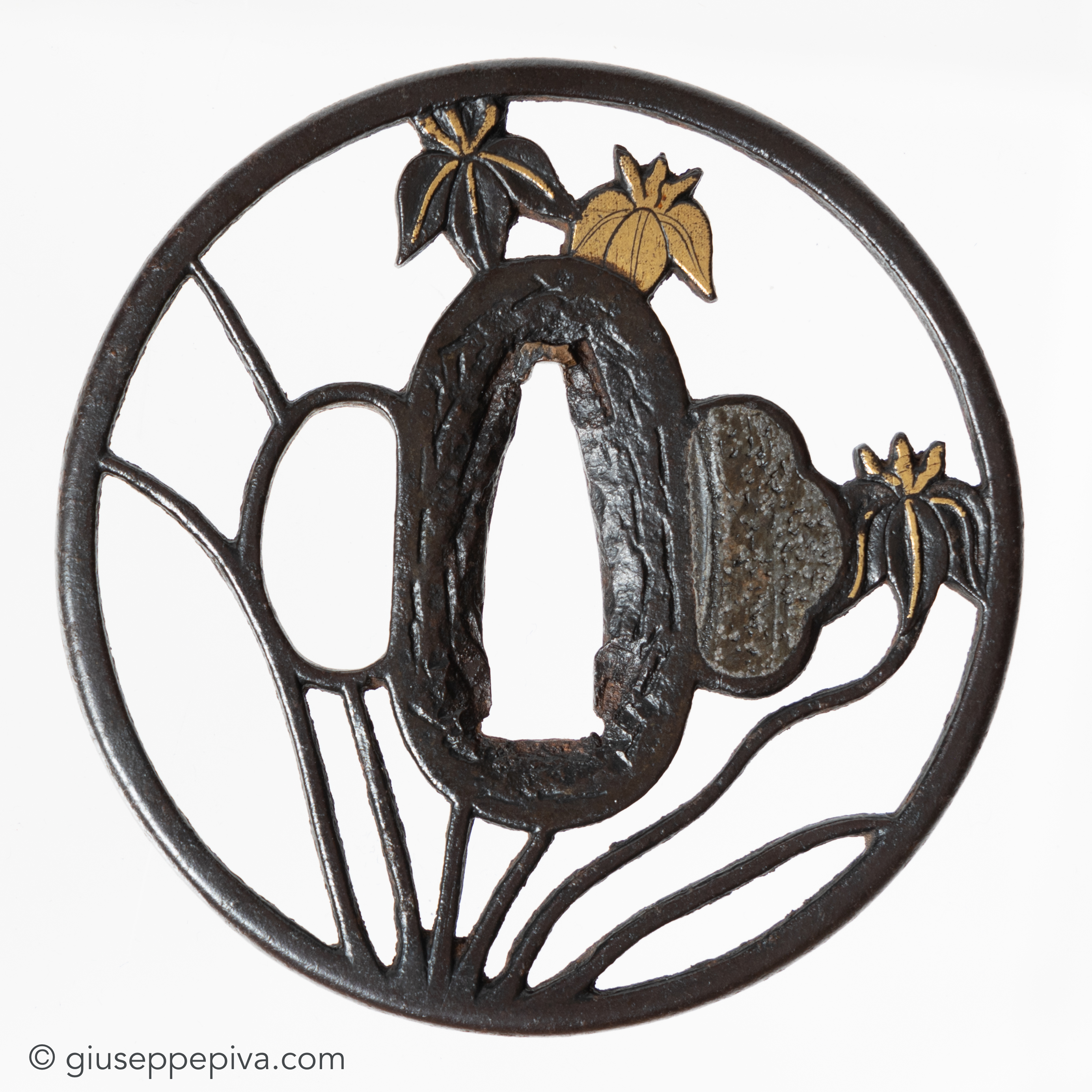Ko-Shoami tsuba with design of iris
Momoyama period (late 16th/early 17th century)
Iron, gold nunome, ji-sukashi
Marugata, diameter: 7.3 cm; thickness 5 mm
Certification: the tsuba comes with a tokubetsu hozon tosogu certificate issued by the NBTHK.
The artistic work of Shoami sukashi openwork decoration lays somewhere between Kyo-sukashi and the Owari schools, being bolder than Kyo but more delicate than Owari. Shoami tsuba employ symmetry with abundant movement. The designs, as in this case, are unique. Like Kyo-sukashi, the first appearance of the Shoami tsuba dates from the Oei era with production lasting some 450 years until the Meiji period.
The term Shoami was found in Muromachi period documents, which indicates that they were silversmiths. The 'ami' of Shoami is a derivative of the name of Amida Buddha, and 'ami' was used to indicate a rank among priests of the Jishu branch of Buddhism. With the establishment of the Ashikaga shogunate, many artisans were engaged by the shogunal court, the term 'ami' was included in the names of the most skilled. For example, Kan’ami and Ze’ami were important figures in the history of Noh drama, and Hon’ami was a well known scholar of swords. It is hence believed that the name Shoami was adopted for tsuba maker from a family serving the Ashikaga as silversmiths.
Inventory Nr: 1780
Info works
Copyright © 2016 - giuseppe piva - VAT: 05104180962





